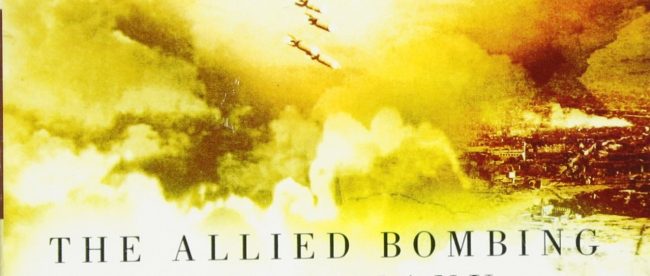How Fire and Fury Fueled a World War II Revival

About two weeks ago, media outlets across the nation began publishing excerpts from Michael Wolff’s book, “Fire and Fury: Inside the Trump White House.” We won’t discuss the content of or reaction to the book here — this newsletter is neither the time nor place — but let’s acknowledge that the book was very popular. For about a week, the news cycle was focused almost singularly on Wolff’s treatise. Booksellers had a tough time keeping it in stock due to the extraordinary demand, and the book shot to the top of Amazon’s best seller list (where it remains today). Michael Wolff was, probably, a very happy guy.
Randall Hansen was pretty happy, too.
Dr. Hansen, currently the interim Director, Munk School of Global Affairs at the University of Toronto, has probably never met Michael Wolff and certainly doesn’t have the credentials nor access to write a book on the goings-on inside the White House. He does, however, have a book to his credit — one published in 2010. Dr. Hansen’s book focuses on the Allied bombing raids on Nazi Germany, both as the tide of the Second World War shifted and then through the end of the war. But it has nothing to do with 21st century America.
And yet, it has something to do with Wolff’s best seller — they share a title, at least until you hit the colon. Hansen’s book is “Fire and Fury: The Allied Bombing of Germany, 1942-1945” — it has the same first three words as Wolff’s. Hansen’s Fire and Fury sold decently when it debuted but, in recent years, sales had slowed down to a drip. It’d be rare for him to sell more than a few copies here or there, and unheard of for it to become suddenly popular. And yet, once Wolff’s book hit shelves, that’s what happened.
As Wolff’s book raced up the charts, it took Hansen’s with it in its wake. The day the former debuted at booksellers everywhere, Hansen decided — on a whim — to check his own book’s sales on Amazon. What he saw was an unexpected success: his book, he told NPR, “moved from very, very low sales onto three [of Amazon’s] best-seller lists.” And the book had sold so many copies, Amazon no longer had any in stock.
Exactly how many copies Hansen sold is so far unknown; he told VICE that he hasn’t received a royalty statement yet, but hopes to soon. Until then, he seems happy enough to simply be part of the moment.
Bonus fact: Amazon (the online retailer, not the river/rainforest comb) became Amazon in 1995, but was founded in 1994, and was originally named was Cadabra. Why the name change? According to the Telegraph, one of Jeff Bezos’s lawyers misheard the name as “cadaver.” Bezos, not wanting to be the founder of a company named after a dead body, changed the organization’s name.
From the Archives: Dennis the Coincidence: Dennis the Menace meets his trans-Atlantic twin.
